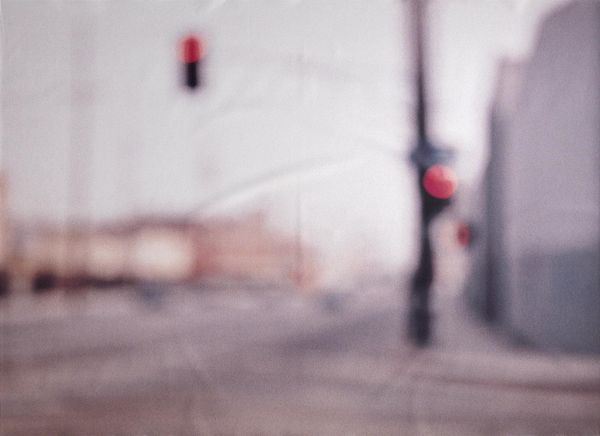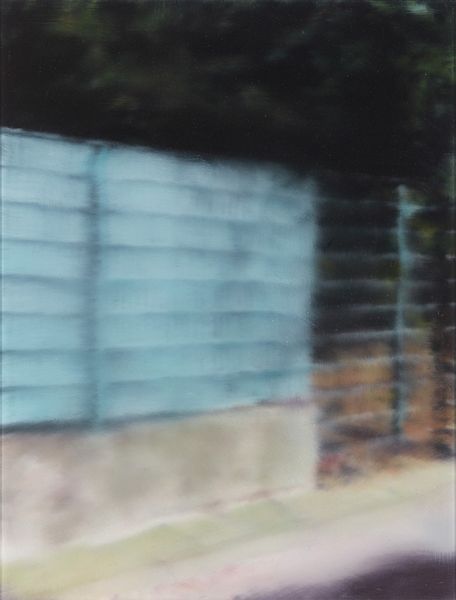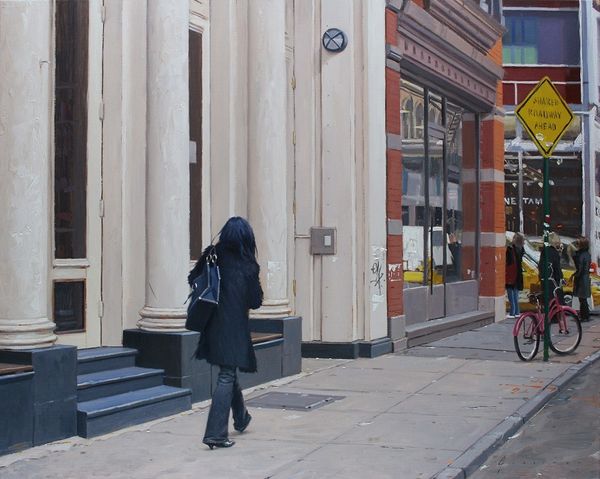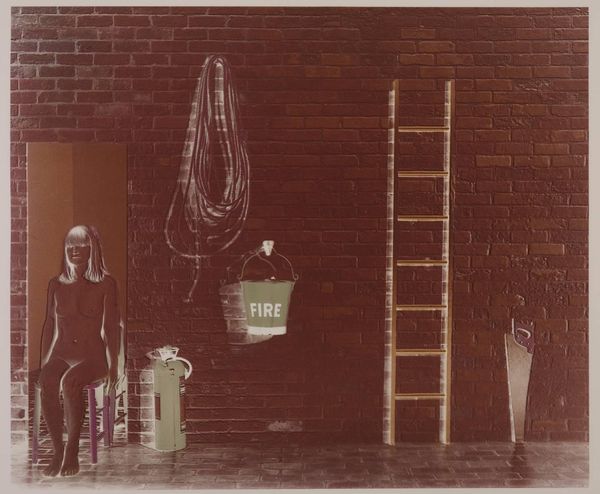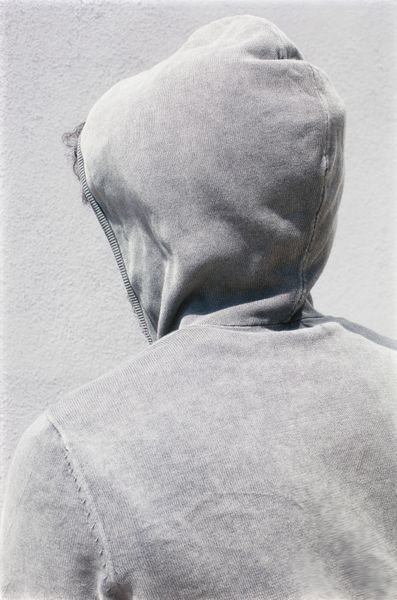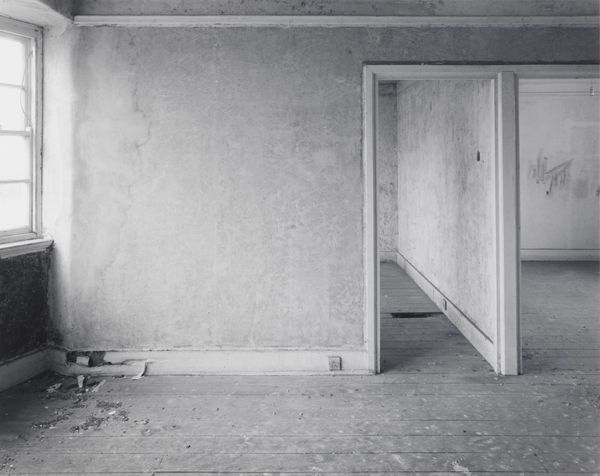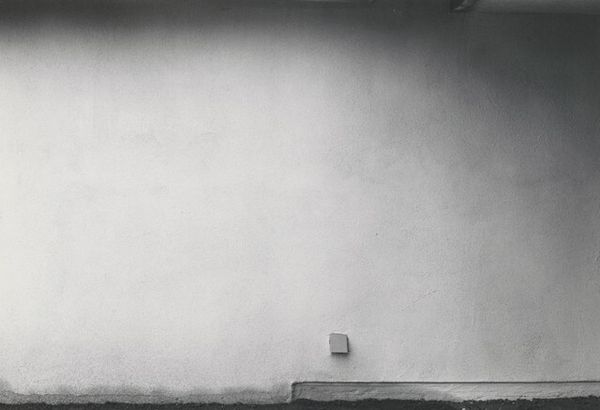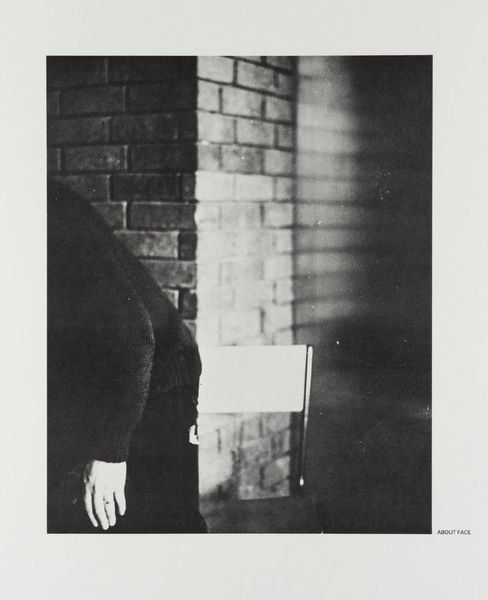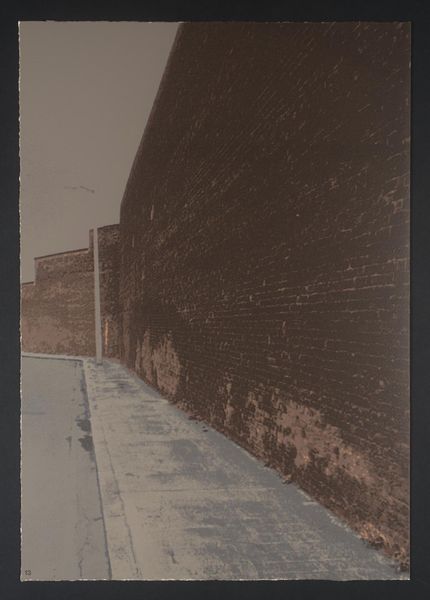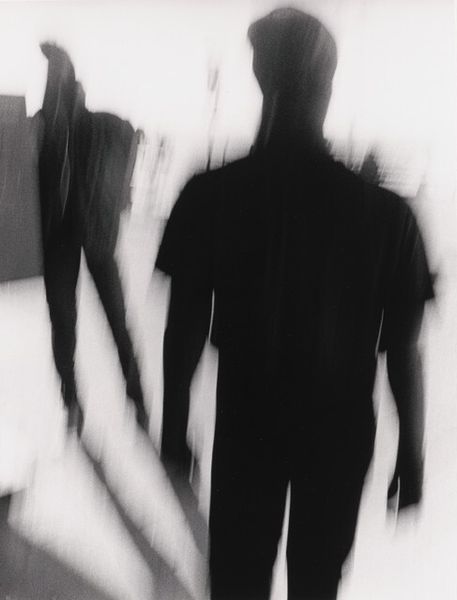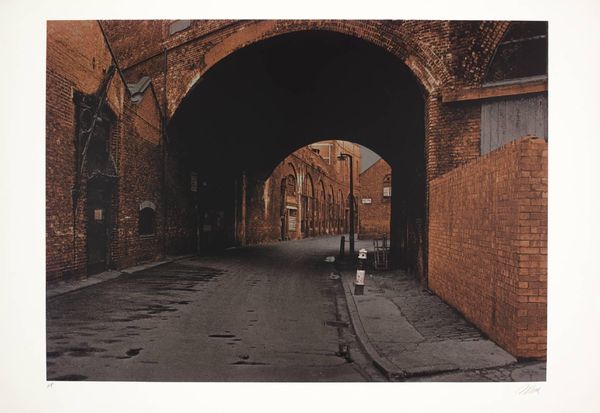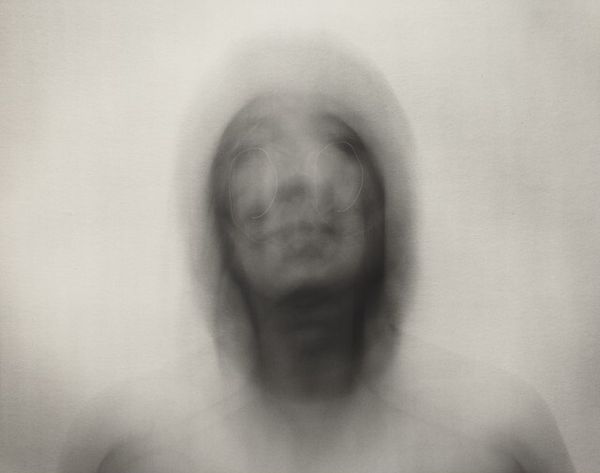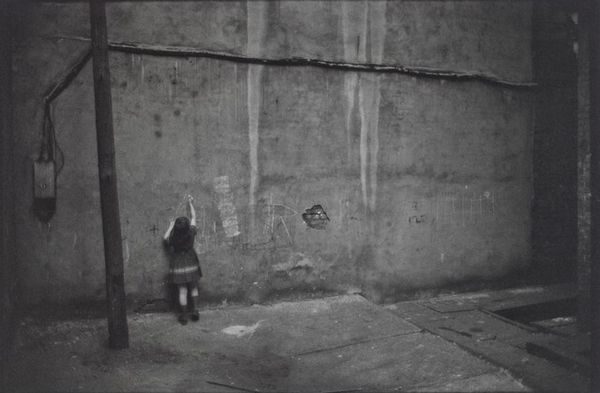
Dimensions: support: 915 x 915 mm
Copyright: © The estate of Keith Arnatt | CC-BY-NC-ND 4.0 DEED, Photo: Tate
Editor: This is Keith Arnatt's "Portrait of the Artist as a Shadow of his Former Self." I find the starkness of the shadow figure against the brick so haunting. What's your take on this work? Curator: This photograph speaks volumes about the artist's perceived role in society. The shadow self suggests a loss of agency. How might we understand this through the lens of institutional critique and the artist's position within a power structure? Editor: So, the shadow isn't just a personal feeling but a statement about the art world? Curator: Precisely. Arnatt might be questioning the very idea of the 'artist' and their supposed importance. Consider the societal pressures and expectations placed upon creatives. What does it mean to become a 'shadow' of that ideal? Editor: I see it now! It makes you think about who defines the artist. Curator: Indeed. Hopefully, this conversation encourages you to think about who wields the power to define identity, and the profound impact that has on artistic expression.
Comments
tate 8 months ago
⋮
http://www.tate.org.uk/art/artworks/arnatt-portrait-of-the-artist-as-a-shadow-of-his-former-self-t07647
Join the conversation
Join millions of artists and users on Artera today and experience the ultimate creative platform.
tate 8 months ago
⋮
In October 1969, over an eight-day period, Keith Arnatt’s Self-Burial (Television Interference Project) (Tate T01747), was broadcast by the German television channel Westdeutsches Fernsehen: each of a series of nine photographs was shown for about two seconds, interrupting the usual flow of programmes. Originally called the ‘Disappearance of the artist’, the photographs reveal the progressive disappearance of the artist into the earth. Arnatt expanded an interest in the nature of the art object with an investigation into and satire of the activities around the production of art itself. He stated: ‘the continual reference to the disappearance of the art object suggested to me the eventual disappearance of the artist himself … my work then was an oblique examining of my own position as an artist as well as that of others’. (Quoted in 1965-1972 When Attitudes Became Form, exhibition catalogue, Kettle’s Yard Gallery, Cambridge and Fruitmarket Gallery, Edinburgh 1984, p.29.)
